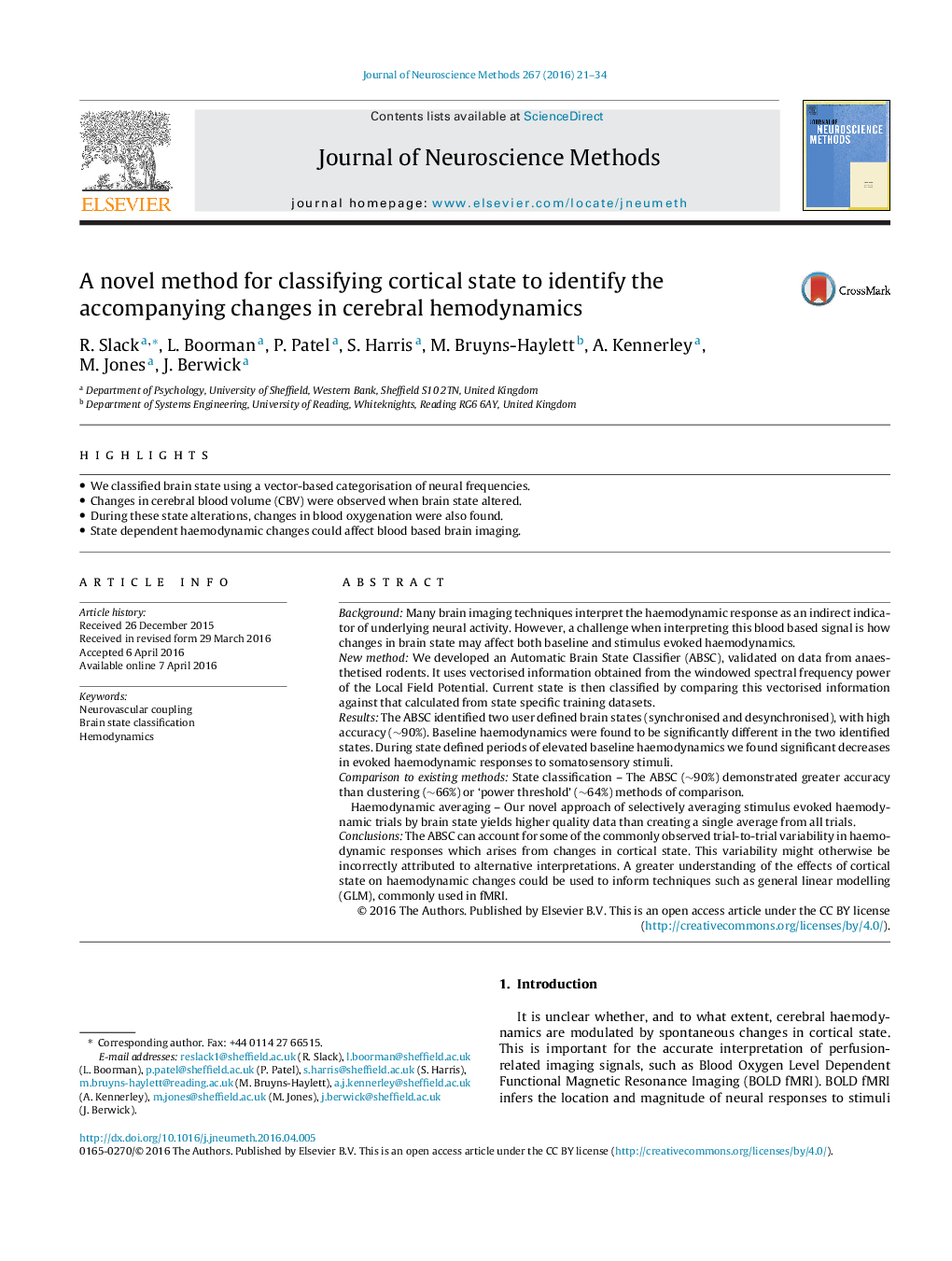| کد مقاله | کد نشریه | سال انتشار | مقاله انگلیسی | نسخه تمام متن |
|---|---|---|---|---|
| 6267758 | 1614602 | 2016 | 14 صفحه PDF | دانلود رایگان |
- We classified brain state using a vector-based categorisation of neural frequencies.
- Changes in cerebral blood volume (CBV) were observed when brain state altered.
- During these state alterations, changes in blood oxygenation were also found.
- State dependent haemodynamic changes could affect blood based brain imaging.
BackgroundMany brain imaging techniques interpret the haemodynamic response as an indirect indicator of underlying neural activity. However, a challenge when interpreting this blood based signal is how changes in brain state may affect both baseline and stimulus evoked haemodynamics.New methodWe developed an Automatic Brain State Classifier (ABSC), validated on data from anaesthetised rodents. It uses vectorised information obtained from the windowed spectral frequency power of the Local Field Potential. Current state is then classified by comparing this vectorised information against that calculated from state specific training datasets.ResultsThe ABSC identified two user defined brain states (synchronised and desynchronised), with high accuracy (â¼90%). Baseline haemodynamics were found to be significantly different in the two identified states. During state defined periods of elevated baseline haemodynamics we found significant decreases in evoked haemodynamic responses to somatosensory stimuli.Comparison to existing methodsState classification - The ABSC (â¼90%) demonstrated greater accuracy than clustering (â¼66%) or 'power threshold' (â¼64%) methods of comparison.Haemodynamic averaging - Our novel approach of selectively averaging stimulus evoked haemodynamic trials by brain state yields higher quality data than creating a single average from all trials.ConclusionsThe ABSC can account for some of the commonly observed trial-to-trial variability in haemodynamic responses which arises from changes in cortical state. This variability might otherwise be incorrectly attributed to alternative interpretations. A greater understanding of the effects of cortical state on haemodynamic changes could be used to inform techniques such as general linear modelling (GLM), commonly used in fMRI.
Journal: Journal of Neuroscience Methods - Volume 267, 15 July 2016, Pages 21-34
